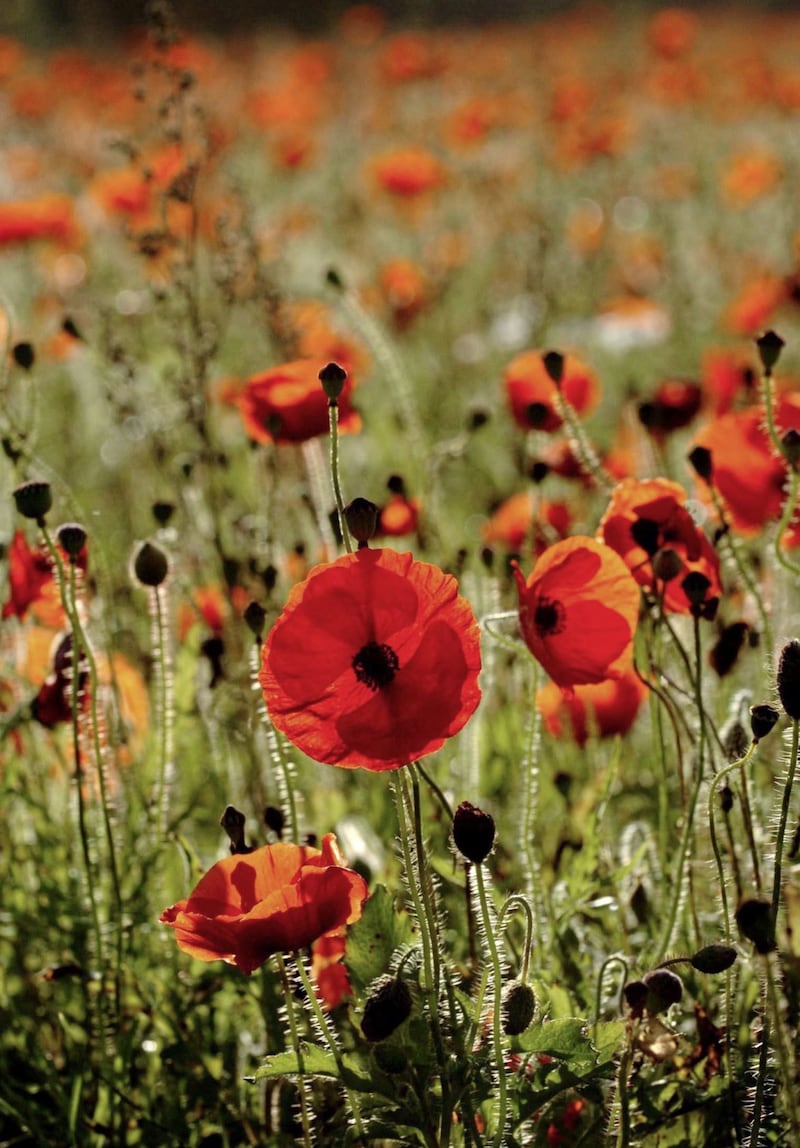It's hard to believe that something as beautiful as the poppy could prove contentious. Yet whatever your worldview, it's hard not to be moved by the symbolism. The seed of Papaver rhoeas, the common field or corn poppy can remain viable for centuries, so as the ground on the killing fields of the Western Front was churned up by tanks, horses and infantry during the First Word War, these fast-growing annuals with their bright, blood red flowers would flourish, their beauty providing a poignant contrast to the carnage all around. They inspired Canadian doctor John McCrae, who wrote the poem In Flanders Fields while serving in Ypres in 1915.
While initially seen as a symbol of peace, in the years after the armistice, artificial poppies were sold in Britain to raise money in support of ex-servicemen and the families of those who had died in the conflict. By 1922, the British Legion founded a factory, staffed by disabled ex-servicemen, to produce its own. It's latterly that the poppy has become contentious – and not only in this part of Ireland. Wearing one on your lapel is no longer regarded as advocating peace but instead demonstrating support for the Armed Forces, including those regiments regarded by nationalists as the apparatus of repression.
But it would be churlish to allow this appropriation to cloud one's opinion of the poppy, as it is a flower that can lift the dreariest of spirits, while also bringing many benefits to wildlife. Similar and often only distinguishable on close inspection is Papaver dubium, the long-headed poppy. Both prefer soil that isn't too fertile and are best suited to wilder planting schemes, complemented by annuals of contrasting colours, such as cornflowers or corn marigolds. Seed should be sown on freshly tilled ground – but not thoroughly – in spring or in the autumn.
The opium poppy's (Papaver somniferum) associations with heroin may put off some people but it's important to remember its sometimes stunning flowers also produce a latex that is used in a wide variety of painkilling drugs, such as morphine and codeine, so-called opiates. The legal harvest of poppy seeds is around 80,000 tonnes per year, with around two thirds of production taking place across Europe. The only thing I'd recommend harvesting is the seeds – to sow the following year's display. Autumn-sown seed tends to mean bigger, stronger plants with more flowers on a stem than spring-sown seed, while spring-sown gets later flowering.

Red oriental poppies (Papaver Orientale) are often mistakenly used in a 'remembrance' context. These thuggish perennials come in many colours, the species variety sporting vermilion flowers. It has to be among the most robust plants available to the gardener. They never need watering and you can dig them up, leave them to wither in the winter cold or summer sun and still they'll refuse to die. They may look expired but chop them down, stand on them, even jump on them, still the oriental poppy stubbornly survives. For best results, plant in full sun.
In late-May the flower buds will form like alien's eggs before they're hoisted skywards on stalks up to metre long. In June, the buds explode into papery blooms of vermilion, pink, lilac, scarlet, etc, depending on variety. The recent spell of warm weather has allowed the flowers on mine to last up to a week but in wet or windy weather their stay can be short. Cut back hard immediately after flowering and you may well get another, albeit less intense, display later in the summer/early autumn.








